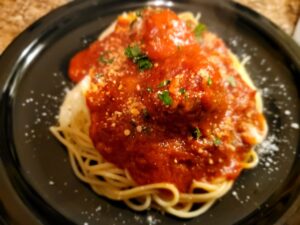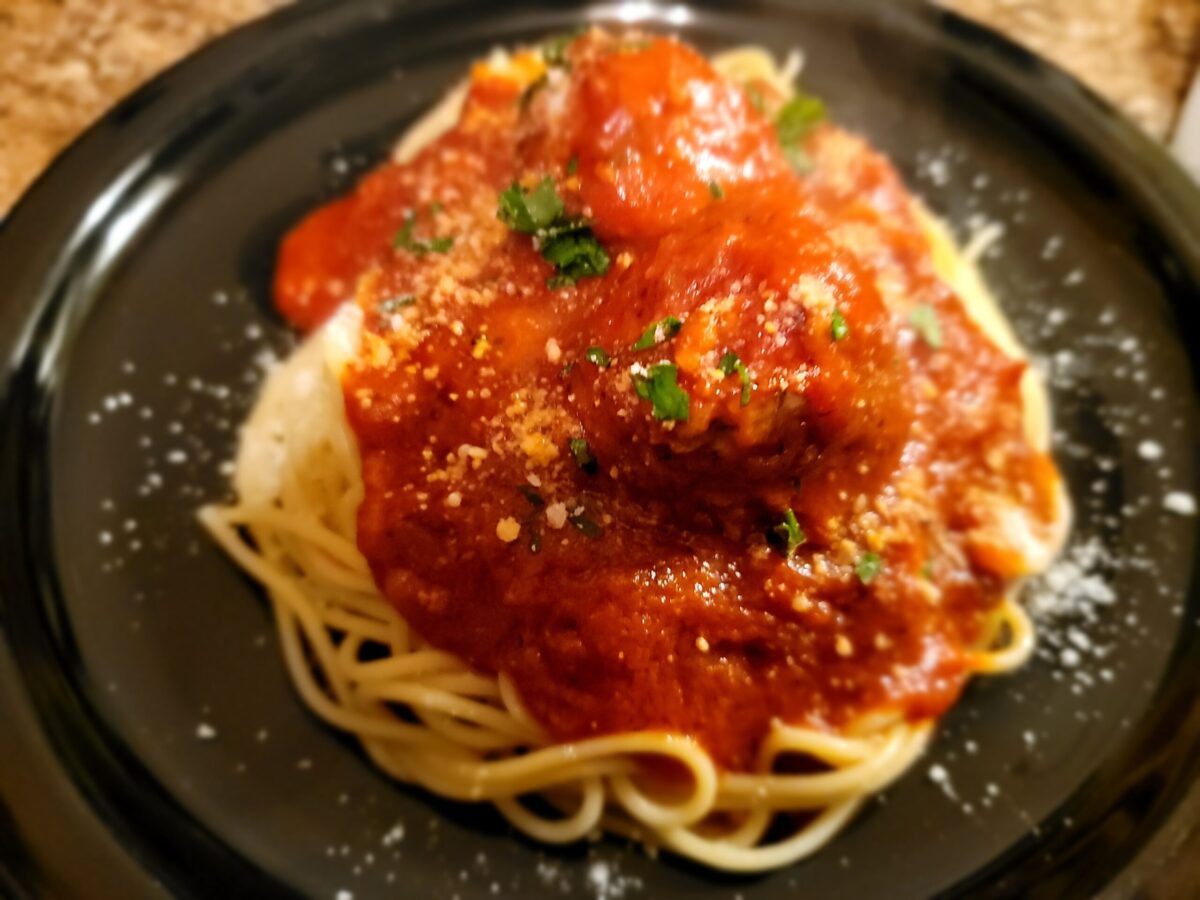Few things say comfort food more than a quality spaghetti and meatballs dish. The dish is so prevalent in our society that everyone has their own heavily guarded “secret ingredients” and family recipes. I did not grow up in an Italian household, so sadly most of my family’s Sunday gravy come out of a bottle. Admittedly I may revert to store bought sauce and meatballs when I’m in a time crunch, but it never seems as fulfilling as a spaghetti and meatballs dish made from scratch.
For years I always pan fried meatballs, and once I made them for my wife I quickly realized just how dense improperly cooked meatballs can be! This was the “cuisine” I grew up with and I honestly did not know any better. So for the next two years I toiled and failed to make a soft meatball that we both enjoyed. My turning point came when I brough home a takeout order of the meatballs served from one of her favorite local restaurants. Once I tried them I became obsessed with trying to replicate them. After two more years of research and trial and error I finally did it! Here are a few things I learned along the way.
How to Make a Moist Meatball
For years my meatballs were made from beef and beef alone. I tried lean and fatty beefs alike, and always came out with a tough meatball. Roll em up, stick em in a pan and fry away! This is what I grew up with and this was what I knew. I’m glad that I know better now (and hopefully you will too).
Meat mixture for our meatballs:
I use three types of meat in my pasta and meatballs. Currently I use an equal amount of ground beef, ground pork and ground veal. I think the sweet spot for the beef is around 80% fat, but that is not available in most stores, so I use 85%. If you feel really ambitious you could make your own “80%” beef out of equal parts 73& and 85%. If you take this approach buy more than you need for this recipe and freeze the mixture for future use. The ground pork adds not only flavor, but adds a little more fat to help offset the leanness of the veal.
Now that the meat is taken care of we need something to bind it all together. Eggs and breadcrumbs, soaked in our wet ingredients, help to hold this all together. It is important that the meat mixture is not over mixed. You want them to be loosely bound together, and over mixing will lead to a tougher meatball.
Proper moisture content for spaghetti and meatballs:
The addition of beef stock and grated onion get absorbed by the bread and yield a perfectly tender meatball. When you grate an onion you will notice it is mainly water. Allow the liquids to soften the breadcrumbs for at least 20 minutes.
Proper way to keep meatballs from drying out:
Once formed, we will add more moisture by “steaming” them on a foil covered sheet pan with water. While this gentle steaming will not brown the meatballs, it will keep them moist and tender. As an added bonus, the water will help keep the fat build up off of the meatballs.
Finally we simmer the cooked meatballs at least another 20 minutes in the tomato sauce to pick up more flavor. The longer you simmer the meatballs, the more flavorfull and tender they will be, so don’t be afraid to simmer them longer. I know it sounds like a lot of work, but trust me it’s worth it!



